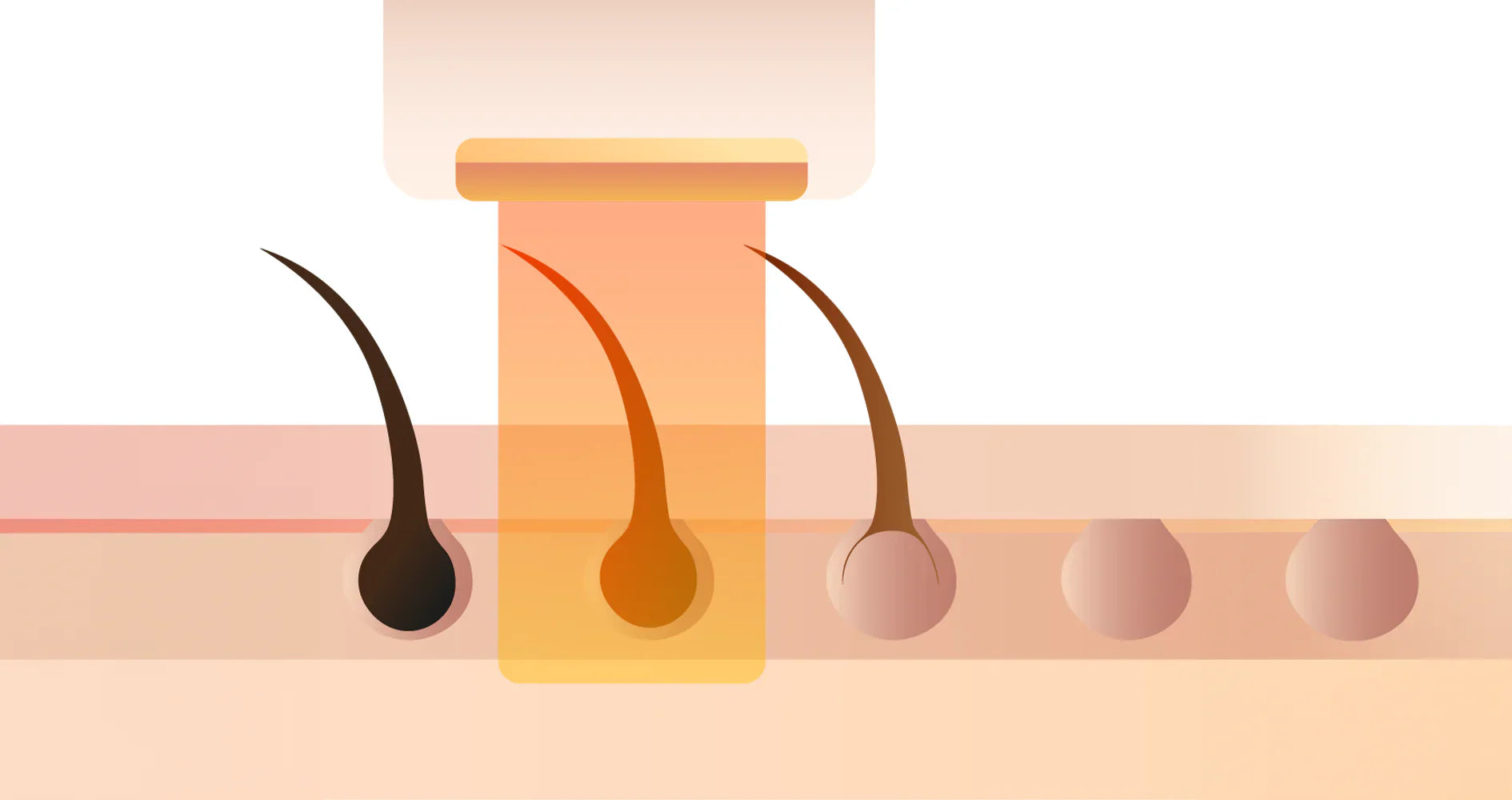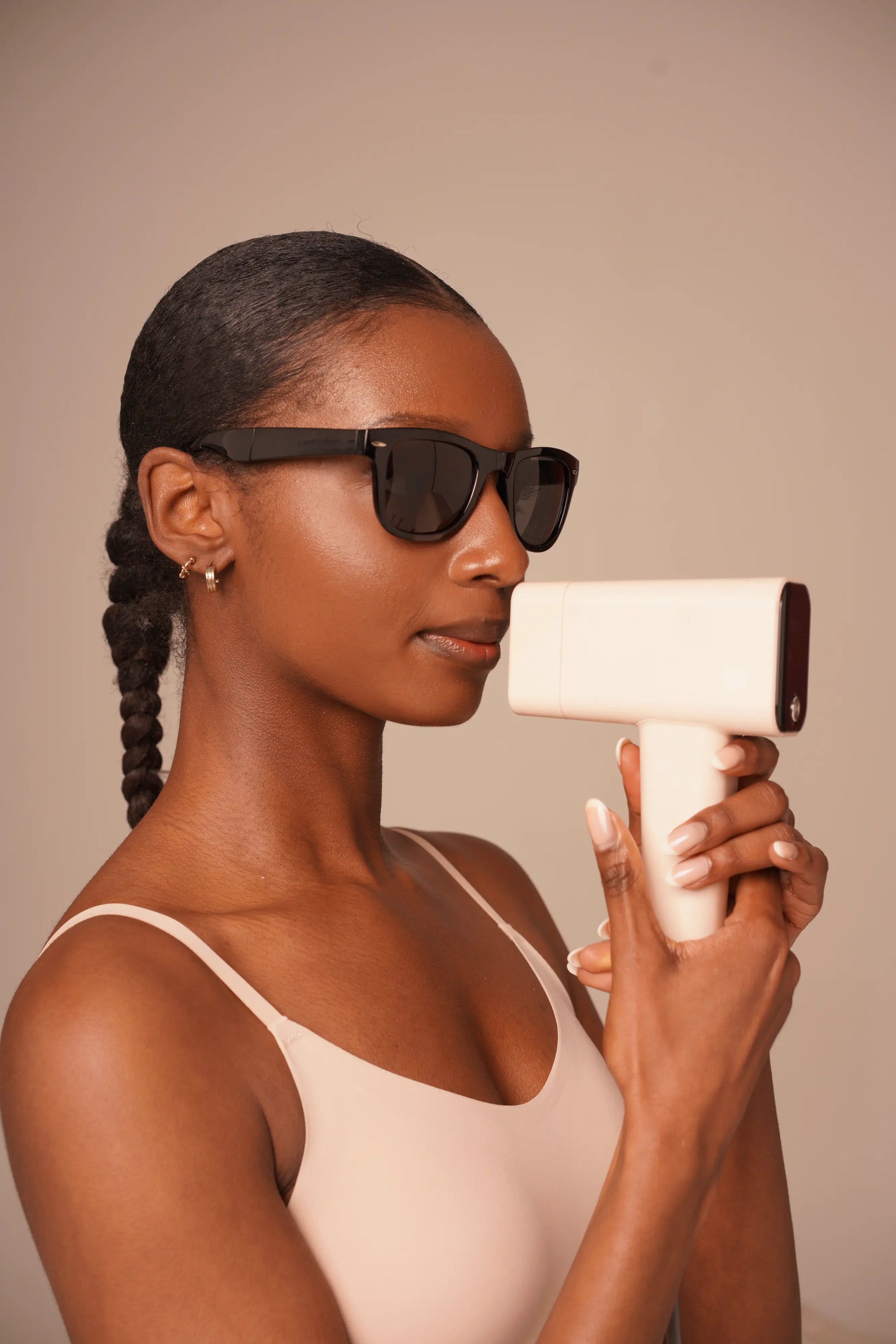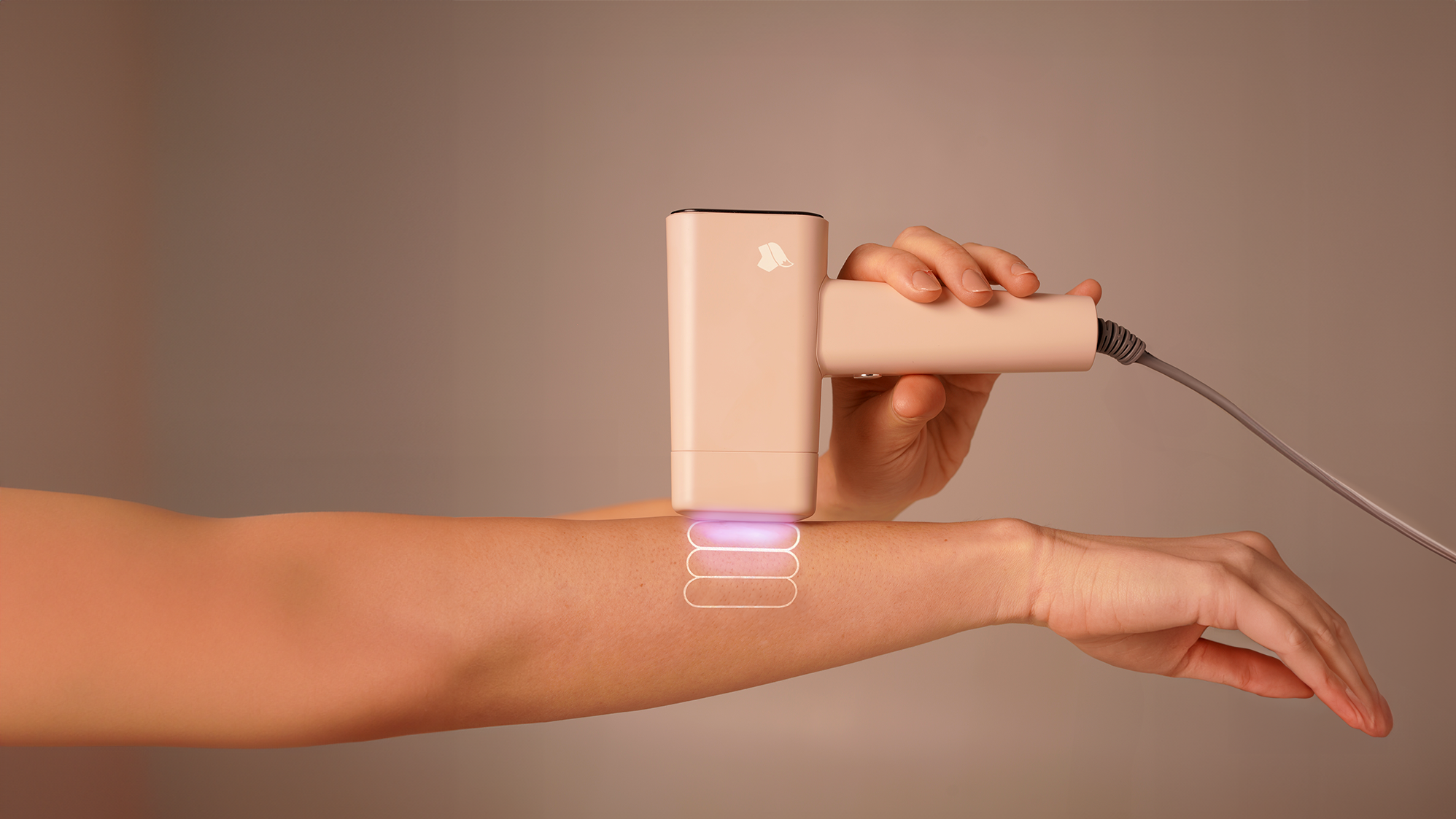Unwanted hair growth is a concern for many individuals, and the aesthetic industry has responded with a variety of solutions—ranging from temporary methods like shaving and waxing to more permanent approaches such as laser and light-based technologies. Among these, Intense Pulsed Light (IPL) has emerged as a widely used option for at-home and in-clinic hair removal.
While IPL is often discussed in lifestyle contexts, the underlying scientific mechanism is less frequently explored. As a medical professional, I will explain how IPL actually works to reduce hair growth, the biological principles involved, and why treatment outcomes vary based on skin phototype and hair characteristics.
What Is IPL and How Does It Work?
Principles of Selective Photothermolysis
IPL devices emit broad-spectrum light, typically in the range of 500–1200 nanometers. Unlike lasers, which emit light at a single wavelength, IPL delivers a range of wavelengths, which can be filtered to target specific chromophores in the skin—most commonly melanin.
The mechanism of action behind IPL relies on selective photothermolysis, a principle first described by Anderson and Parrish in 1983. According to this concept, if a light pulse is applied to the skin at the appropriate wavelength and duration, it can selectively heat and destroy pigmented targets—in this case, the melanin in hair shafts and follicles—without damaging surrounding tissue.
Thermal Injury and Follicular Disruption
When melanin absorbs light energy, it converts it into heat. This localized thermal energy is sufficient to induce coagulative necrosis in the surrounding follicular epithelium, primarily targeting the bulge region (home to follicular stem cells) and the hair matrix (the mitotically active zone responsible for hair shaft generation). Disruption of these regions leads to delayed regrowth and, after repeated treatments, permanent follicular miniaturization or destruction.
The Hair Growth Cycle: Timing Is Everything
Hair follicles undergo cyclic growth through three main phases:
-
Anagen (growth phase) – Active melanin production and cellular proliferation.
-
Catagen (regression phase) – Follicular apoptosis begins; melanin production ceases.
-
Telogen (resting phase) – The hair shaft is retained, but no active growth occurs.
IPL is effective only during the anagen phase, when melanin concentration is highest and the follicle is most vulnerable to heat damage. However, not all hairs are in the same phase simultaneously. This explains why multiple sessions (typically 6–12) spaced over several weeks are required to treat all follicles effectively.
Why IPL Works Best for Certain Skin and Hair Types
Melanin as a Double-Edged Sword
The efficacy of IPL is highly dependent on melanin contrast between hair and skin. IPL systems are most effective in patients with Fitzpatrick skin types I–III and dark, coarse hair. These individuals exhibit high melanin concentration in the hair follicle and relatively low levels in the surrounding epidermis, reducing the risk of epidermal damage.
Conversely, patients with lighter hair colors (blonde, gray, red) have lower follicular melanin content, limiting IPL absorption and efficacy. Similarly, darker skin tones (Fitzpatrick IV–VI) contain more melanin in the epidermis, increasing the risk of nonspecific thermal absorption, which may result in post-inflammatory hyperpigmentation (PIH), burns, or hypopigmentation.
Advancements in Technology
Newer IPL devices incorporate skin contact sensors, dynamic cooling systems, and adjustable pulse durations to enhance safety for darker phototypes. Additionally, narrowband filtering (e.g., 650–950 nm) helps reduce the risk of superficial skin injury by excluding shorter wavelengths that are more readily absorbed by epidermal melanin.
IPL vs. Laser: A Technical Comparison
| Feature | IPL | Laser Hair Removal |
|---|---|---|
| Light Source | Polychromatic (500–1200 nm) | Monochromatic (e.g., 755, 810, 1064 nm) |
| Depth of Penetration | Moderate | Deeper, depending on wavelength |
| Target Specificity | Lower (broader chromophore impact) | High (specific to melanin) |
| Treatment Area Size | Larger spot sizes possible | Smaller, more focused |
| Session Frequency | More sessions needed | Fewer sessions |
| Ideal Candidate | Light skin + dark hair | Same, but more adaptable to skin types |
While IPL is less specific than laser systems like alexandrite, diode, or Nd:YAG, it offers a cost-effective and larger coverage option—particularly beneficial for lower-risk skin types.
Clinical Outcomes and Efficacy
Reduction Rates
Clinical studies report hair reduction rates ranging from 40% to 80% after multiple IPL sessions, depending on hair density, body area, and patient compliance. A study by Gold et al. (2010) demonstrated a 78% reduction in hair count one month after six treatments with a home-use IPL device.
Long-Term Considerations
Maintenance sessions are often necessary, particularly in hormone-sensitive areas (e.g., face, underarms, bikini line), or in patients with underlying endocrine conditions such as PCOS. Hair regrowth may still occur, but is typically finer, lighter, and less dense over time.
Safety Considerations and Contraindications
Common Side Effects
-
Erythema (redness)
-
Perifollicular edema
-
Mild discomfort or burning sensation
These typically resolve within 24–48 hours. Applying cooling gels, soothing lotions, and broad-spectrum sunscreen can accelerate recovery.
Absolute Contraindications
-
Pregnancy (due to lack of safety data)
-
Photosensitive disorders (e.g., lupus)
-
Active skin infections or open wounds
-
Tanned or sunburned skin
-
Use of photosensitizing medications
Emerging Research and Future Directions
-
Targeted wavelength optimization through intense filtering and pulse sequencing
-
Home-use IPL devices with AI-based skin assessment tools
-
Combination therapies (e.g., IPL + topical anti-androgens for hirsutism)
-
Improved efficacy for light hair types using melanin-mimicking nanoparticles (currently under preclinical review)
IPL hair removal is grounded in well-established dermatological science. By targeting melanin in the hair follicle during its active growth phase, IPL induces thermal injury that results in long-term reduction of unwanted hair. While ideal for lighter skin and darker hair, ongoing technological advancements are expanding its safe and effective use to a broader patient population.
As always, patients should undergo professional evaluation to ensure proper skin typing, safety screening, and individualized treatment planning.
References
-
Anderson, R. R., & Parrish, J. A. (1983). Selective photothermolysis: precise microsurgery by selective absorption of pulsed radiation. Science, 220(4596), 524–527.
-
Gold, M. H., Foster, A., & Biron, J. A. (2010). Low-Energy Intense Pulsed Light for Hair Removal at Home. Journal of Clinical and Aesthetic Dermatology, 3(2), 48–53.
-
Ross, E. V., Naseef, G. S., McKinlay, J. R., Barnette, D. J., Skrobal, M., & Miller, C. H. (1999). Comparison of carbon dioxide laser, erbium:YAG laser, dermabrasion, and chemical peels in resurfacing of facial rhytides. Dermatologic Surgery, 25(2), 101–107.
-
Kwon, H. H., Yoon, J. Y., Park, H. Y., et al. (2021). Home-based devices in dermatology: a systematic review of safety and efficacy. Archives of Dermatological Research, 313(5), 339–349.
-
Saedi, N., Petelin, A., & Zachary, C. (2013). Laser Hair Removal: A Review. Dermatologic Clinics, 32(1), 153–163.
-
Rao, J., & Goldman, M. P. (2005). Prospective, comparative evaluation of three laser systems used to remove unwanted hair. Dermatologic Surgery, 31(7 Pt 2), 891–895.



